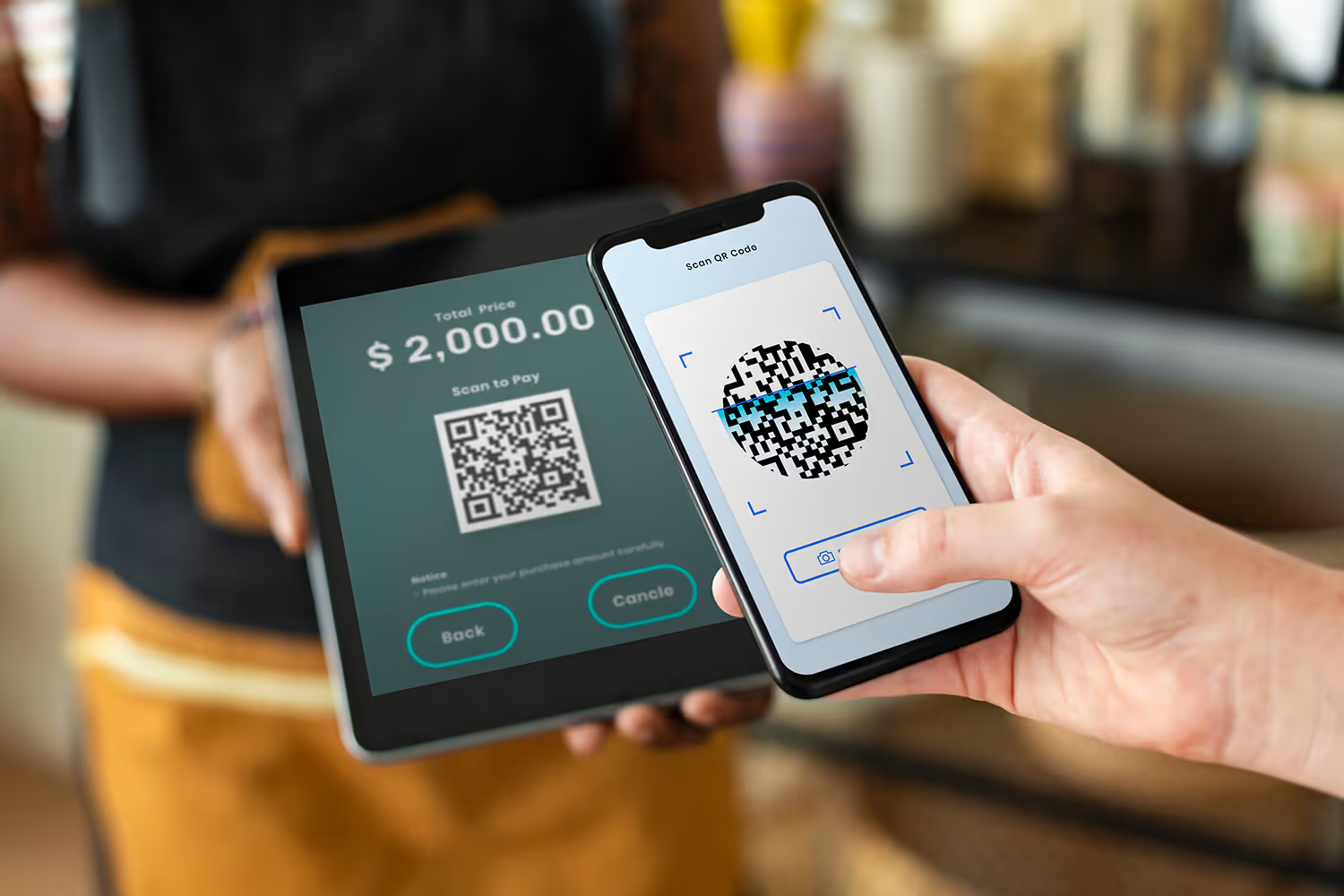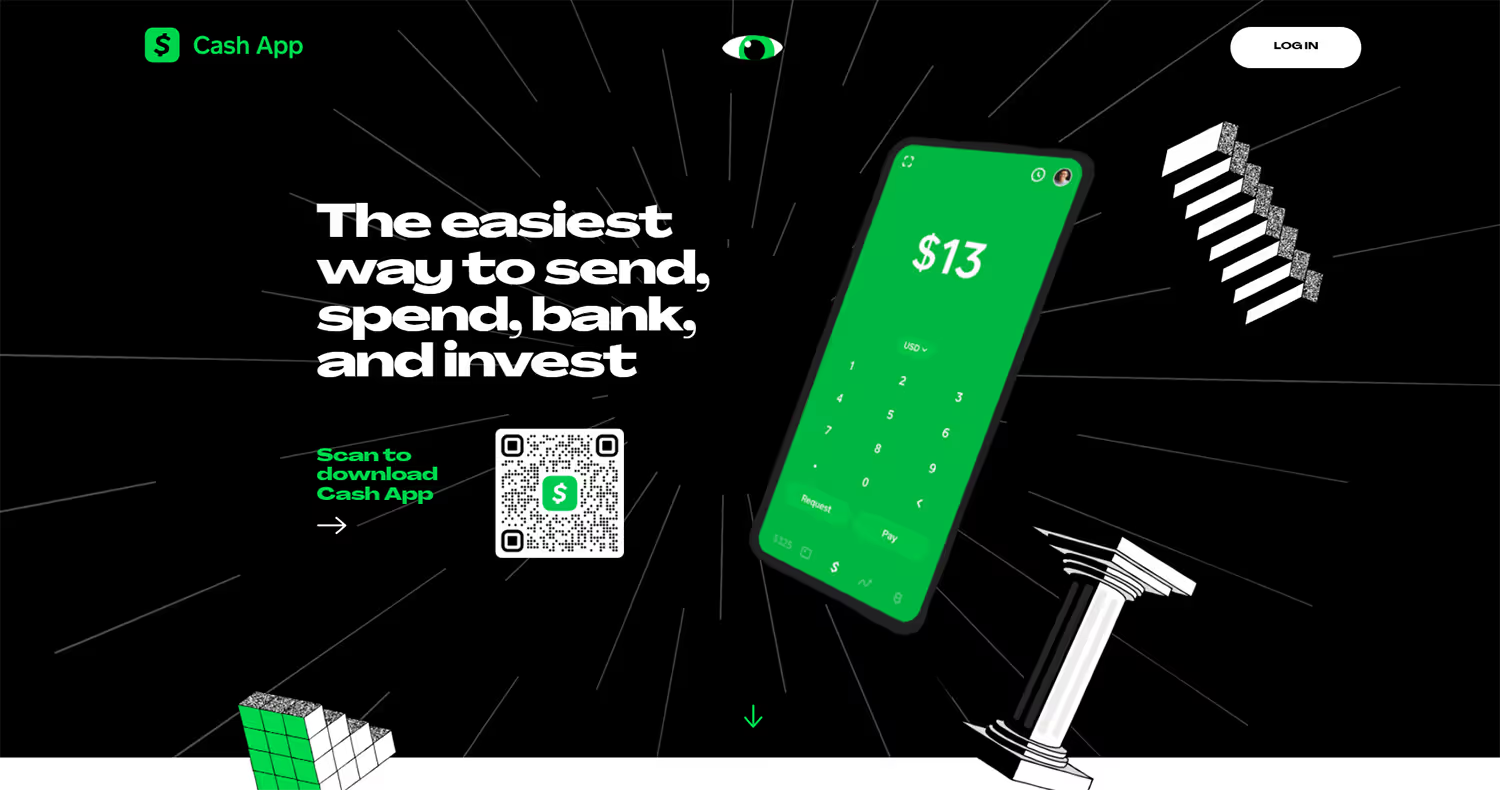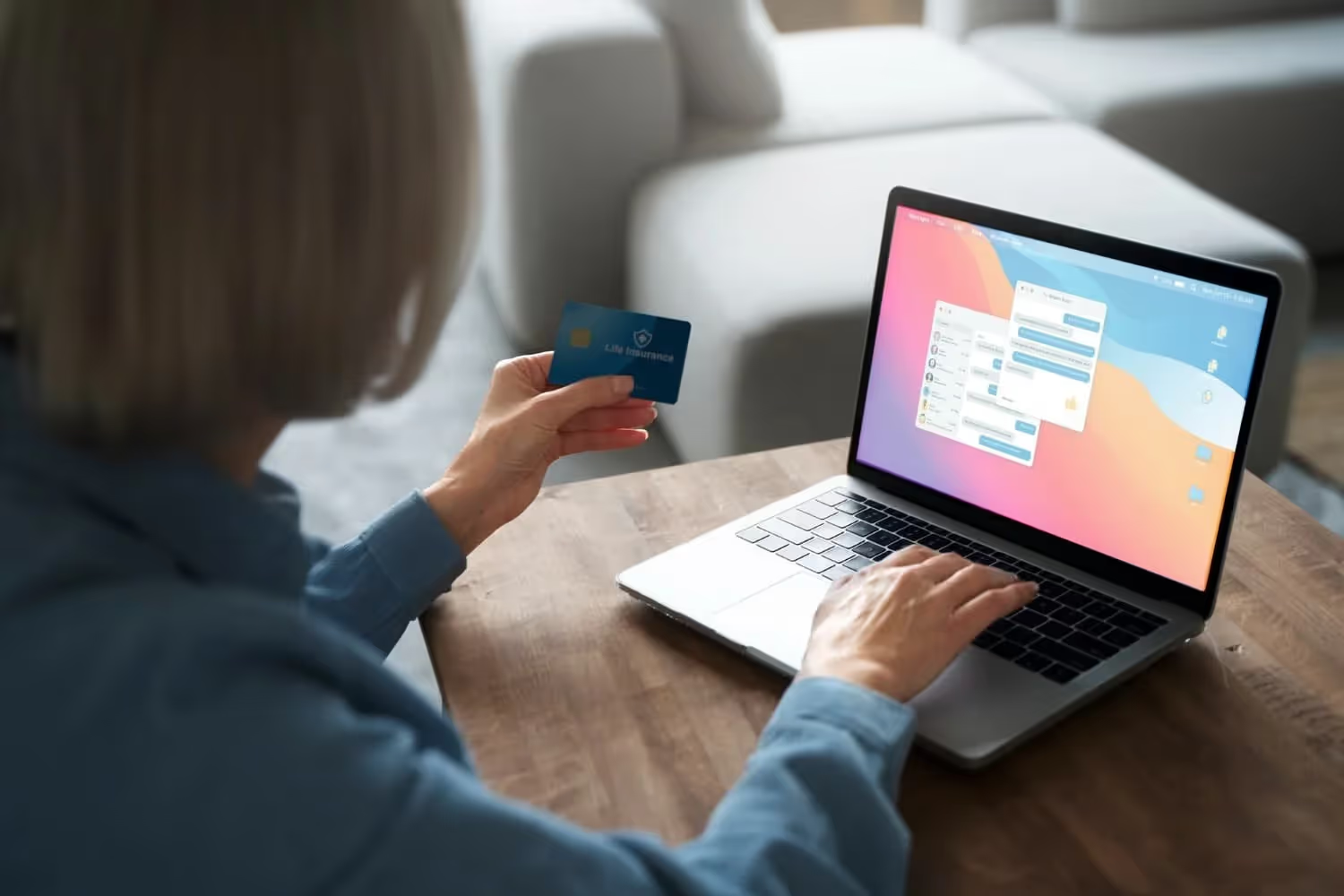Scan Here: Why You NEED QR Codes for Payment
But how do people pay by just scanning these small squares with their phone camera? In this blog, we’ll go over why you should use QR codes for payment and examples of compatible platforms.

If you watched Super Bowl LVI, one commercial that may have stood out to you involved nothing but a bouncing QR code. In the final second of the commercial, the square ended up perfectly in the corner of the screen like a desktop computer screensaver. Thanks, Coinbase, for the nostalgia.
The creative genius behind this commercial deserves a raise because it gained so much attention that the site crashed.
So how did nothing but a square on the screen get so many people to a website in a matter of seconds? By using a QR (quick response) code, people used their smartphone cameras to scan the square and navigate to the site.
It seems like these are everywhere because of how many uses they have. They’re in restaurants to access menus online, retail stores to receive discounts, and advertisements to subscribe to mailing lists.
Yet there’s one convenient option that this unique technology has, and that’s payment. This is quickly becoming a popular way to collect money across all industries.
But how do people pay by just scanning these small squares with their phone camera? In this blog, we’ll go over why you should use QR codes for payment and examples of compatible platforms.
What is QR Code Payment?
To understand why it’s useful to use QR code payment, you need to know what the heck this even is. You’re probably most familiar with using these codes to direct you to a specific website.
But they’re even more convenient than that. When used for transactions, these can work in several ways. The first involves the person scanning a code provided by the business by using their phone camera app. This then takes the customer to the merchant’s site to pay what they owe.
For example, Texas Roadhouse prints diners’ QR codes on the receipt. Instead of the customer leaving their credit card or cash for the server, they can scan the code to pay electronically. This takes them to an online receipt where they enter their payment details. It makes the process faster for both the business and the customer.

Another way to use QR codes for payment is with specific apps used by the business. With these platforms, the user has their own unique code. They then connect their profile to their bank account or debit or credit card.
Walmart is one retailer that uses this option. Shoppers download the Walmart app and create an account. They then add their financial details to the “Walmart Pay” section. When they checkout at the store, they simply scan their QR code at the register.
The app works like a middle man so the vendor can receive payment directly from the person’s account.
Which Platforms to Use
A survey found that of those who use these codes, most people scanned them within the past week at the time of the survey. Because there are several ways to use these QR codes for payment and since people rely on them so often, businesses and consumers need to decide which are the best platforms to use.

The example from Texas Roadhouse that directs users to the merchant’s site may be easier for the business. If they already support online purchases, this isn’t too much different since the customer gets directed to that site to pay. It’s also easy for the customer so they don’t need to download a specific app. But it still has some extra work involved for users since they need to input their financial information at the time they use it.
Platforms with codes linked to the users’ profiles are faster than this option. Since they have the consumer’s information already loaded onto the account, transactions happen in a matter of seconds.
But it can be annoying for people to download apps for every single business they use. The reality is that not enough people will transition to doing that. Before long, their device would run out of space because they’ll have so many business’ apps.
Instead, there are some platforms that customers can use at various locations since the app’s purpose is specifically for payment.
Venmo
If you’ve ever had to reimburse a friend for something that they purchased on your behalf, then you’ve probably heard of Venmo. Maybe you use it to pay back your roommate each month for your share of utilities since the bills are in her name.
This is the more common way that people use Venmo: for peer-to-peer payments to send money to someone they know. It introduced a QR code so people can find each other easier. They don’t need to worry about typing in the username incorrectly and sending money to the wrong person.
But now, vendors can also use Venmo’s QR code functionalities. If businesses support this platform, they can collect money through this app in two different ways…
- The merchant scans the customer’s unique code
- The customer scans a code presented by the merchant
Cash App
If you don’t use Venmo, there’s a chance it’s because you’re using Cash App. These are two of the most popular peer-to-peer money transfer tools.
Cash App works in the same way as Venmo when it comes to using QR codes for payment. The home page of its website even advertises downloading their app by scanning…wait for it…a QR code.

PayPal
PayPal owns Venmo, but it has its own separate platform which functions similarly. For businesses that use this service, customers scan the merchants’ unique code to make their payments.
This service also includes a Show to Pay method where the vendor scans the user’s code. But this option is only available at certain retailers like CVS, Walmart, and 7 Eleven.
Because this relies on the business to have its own code for customers to scan, companies that want to use PayPal can download a unique code for free.
Zelle
Zelle is a digital payment network that sends money directly between most US banks and credit unions. It’s co-owned by major US banks so consumers can send and receive a payment within minutes. Even if someone’s bank doesn’t support using this tool, consumers can still download the Zelle app to deposit their funds that way.
It has over 90% of the top financial institutions in its network with around 140 million users. When contactless payment started trending in 2020, Zelle for small businesses became available. Businesses that bank with one of Zelle’s selected banks can use this service to collect payments.
So how do consumers use a Zelle QR code for payment? When they use the service through their banking app and click “Send,” they can access the icon to scan. Tapping this icon makes the phone’s camera open. Then, consumers just point the camera at the vendor’s QR code and follow the prompts.
Square
Square has so many tools for businesses that need a manageable point-of-sales. Of course, one of its options includes QR codes. These serve different purposes to help Square’s clients.
Restaurant businesses can create online menus that consumers can access by scanning the provided code. Similar to the Texas Roadhouse example, this would take the individual to a site where they can order or pay online. With this option through Square, the code maps the tables in the restaurant to enhance this service for restaurant staff.
Square also generates codes that businesses can share online or print to accept payment. This eliminates the need for creating an entire website. While customers can use them for onsite orders, they can also scan them from a printed ad to order remotely.
Clover
Clover is another option for restaurateurs which aims to make the point-of-sale easier for the food industry. It offers safer and faster ordering since servers print a Scan to Order QR code which they provide to their customers.
Guests then access online menus and can place their order on-the-spot electronically. Clover’s mapping system ensures that the food gets delivered to the correct table. And finally, the diners pay online using the code. It makes the payment process even easier for restaurants because whoever prints the Scan to Order QR code is the server that receives the tips.
Reasons to Use QR Codes for Payment
So what’s the point of using these tiny squares to collect or transfer money? Why should consumers get apps that offer these, and why does your business need to support those tools?
During the COVID-19 pandemic, businesses started relying heavily on contactless point-of-sale. People didn’t want to spread germs by touching others’ credit cards, cash, or checks (if you still use those). Almost half of consumers started using a card with contactless functionality.

So merchants and financial institutions began to adapt. Banks began supporting options such as Zelle and tap-to-pay cards. The less contact the better, but these solutions also had to come quick.
And QR codes offered that instant solution. People didn’t need to get a new card with a tap-to-pay option. For many, they could keep using apps that they already had such as the peer-to-peer payment platforms Venmo and PayPal.
Because of its convenience, this technology has stuck. Now, people won’t worry if they forget their wallets since they can pay directly from their phones. They also don’t need to fuss with digging through their wallet or bag for their credit card.
It makes transactions faster when people can simply scan instead of going through all the prompts on a card reader. I don’t know if you’ve ever had to wait for one of these slow machines to read your card, but it always seems to happen when there’s a long line.
Not to mention if there’s a bug in the system and your card gets denied. Talk about pressure from impatient people. Checking out for services has never been faster or easier.
Conclusion
We live in a world where digital options are necessary to attract consumers. People desire fast-paced and convenient services. This is especially true when it comes to payment. Because of the convenience, 80% of people prefer to pay using digital options.
With how many electronic methods there are to collect money, QR codes are getting more and more attention. They make the transaction process easier and faster for both the consumer and business.
Luckily, businesses don’t need to implement using these on their own. There are already applications that support collecting money for organizations that want to use this technology. But if they want, vendors can use options branded for themselves such as through their company app or codes that link to their website.
No matter how they offer these tools, consumers will appreciate that the businesses they use have this option.
Emphasize your product's unique features or benefits to differentiate it from competitors
In nec dictum adipiscing pharetra enim etiam scelerisque dolor purus ipsum egestas cursus vulputate arcu egestas ut eu sed mollis consectetur mattis pharetra curabitur et maecenas in mattis fames consectetur ipsum quis risus mauris aliquam ornare nisl purus at ipsum nulla accumsan consectetur vestibulum suspendisse aliquam condimentum scelerisque lacinia pellentesque vestibulum condimentum turpis ligula pharetra dictum sapien facilisis sapien at sagittis et cursus congue.
- Pharetra curabitur et maecenas in mattis fames consectetur ipsum quis risus.
- Justo urna nisi auctor consequat consectetur dolor lectus blandit.
- Eget egestas volutpat lacinia vestibulum vitae mattis hendrerit.
- Ornare elit odio tellus orci bibendum dictum id sem congue enim amet diam.
Incorporate statistics or specific numbers to highlight the effectiveness or popularity of your offering
Convallis pellentesque ullamcorper sapien sed tristique fermentum proin amet quam tincidunt feugiat vitae neque quisque odio ut pellentesque ac mauris eget lectus. Pretium arcu turpis lacus sapien sit at eu sapien duis magna nunc nibh nam non ut nibh ultrices ultrices elementum egestas enim nisl sed cursus pellentesque sit dignissim enim euismod sit et convallis sed pelis viverra quam at nisl sit pharetra enim nisl nec vestibulum posuere in volutpat sed blandit neque risus.

Use time-sensitive language to encourage immediate action, such as "Limited Time Offer
Feugiat vitae neque quisque odio ut pellentesque ac mauris eget lectus. Pretium arcu turpis lacus sapien sit at eu sapien duis magna nunc nibh nam non ut nibh ultrices ultrices elementum egestas enim nisl sed cursus pellentesque sit dignissim enim euismod sit et convallis sed pelis viverra quam at nisl sit pharetra enim nisl nec vestibulum posuere in volutpat sed blandit neque risus.
- Pharetra curabitur et maecenas in mattis fames consectetur ipsum quis risus.
- Justo urna nisi auctor consequat consectetur dolor lectus blandit.
- Eget egestas volutpat lacinia vestibulum vitae mattis hendrerit.
- Ornare elit odio tellus orci bibendum dictum id sem congue enim amet diam.
Address customer pain points directly by showing how your product solves their problems
Feugiat vitae neque quisque odio ut pellentesque ac mauris eget lectus. Pretium arcu turpis lacus sapien sit at eu sapien duis magna nunc nibh nam non ut nibh ultrices ultrices elementum egestas enim nisl sed cursus pellentesque sit dignissim enim euismod sit et convallis sed pelis viverra quam at nisl sit pharetra enim nisl nec vestibulum posuere in volutpat sed blandit neque risus.
Vel etiam vel amet aenean eget in habitasse nunc duis tellus sem turpis risus aliquam ac volutpat tellus eu faucibus ullamcorper.
Tailor titles to your ideal customer segment using phrases like "Designed for Busy Professionals
Sed pretium id nibh id sit felis vitae volutpat volutpat adipiscing at sodales neque lectus mi phasellus commodo at elit suspendisse ornare faucibus lectus purus viverra in nec aliquet commodo et sed sed nisi tempor mi pellentesque arcu viverra pretium duis enim vulputate dignissim etiam ultrices vitae neque urna proin nibh diam turpis augue lacus.




